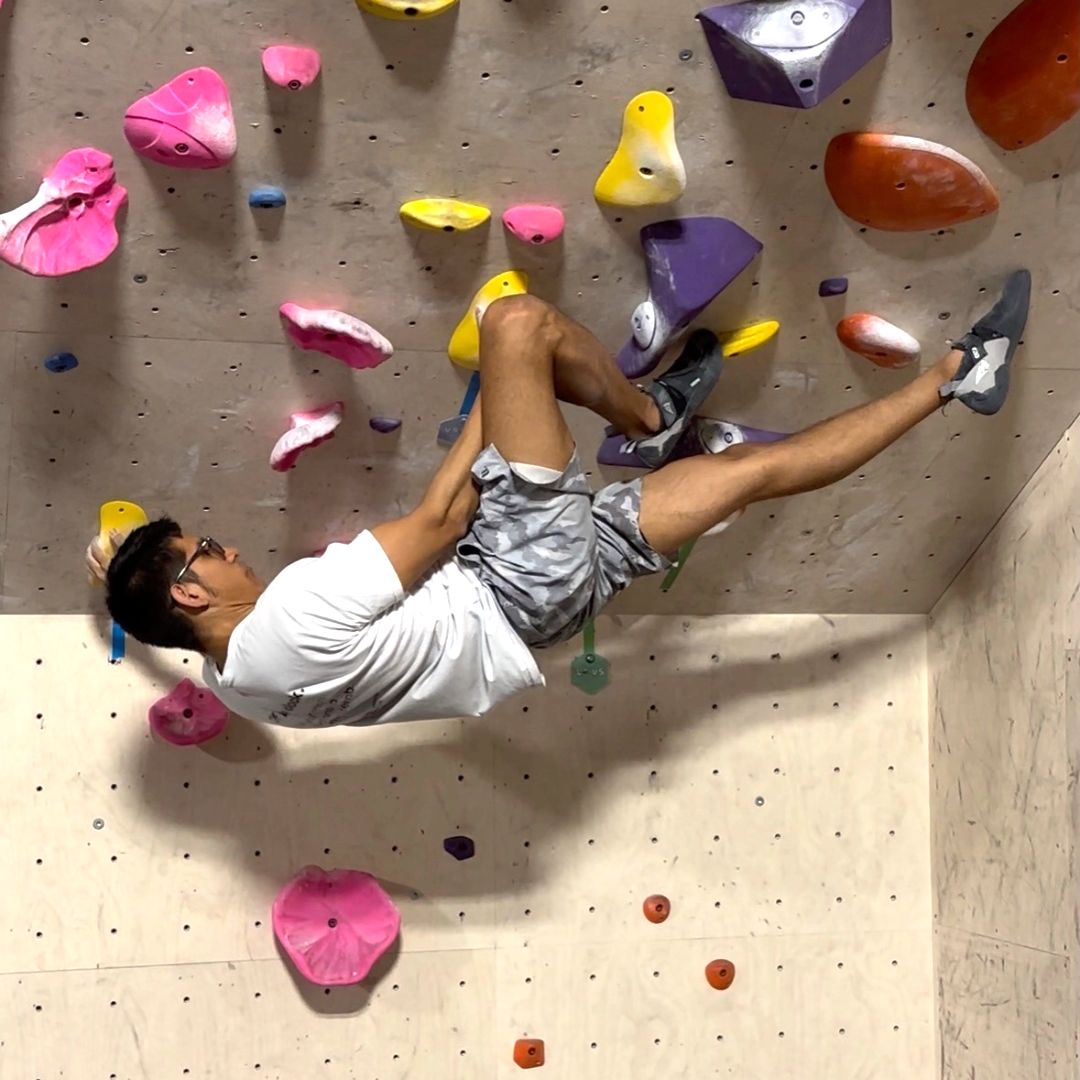By Dr. Miguel Zevallos, PT, DPT
As you advance in your climbing, you’ll eventually notice where your body wants your feet to go to make that next move. But when you look down for that foothold, it’s not there. What do you do now?

(Example 1: With glute activation only, the flagging leg pulls your hips away from the wall.)
Flagging is the use of that free-hanging foot to act as a counterbalance as you engage your body for that next move on a climb. This is a textbook application of co-contraction.
Co-contraction occurs when both agonist and antagonist muscles around a joint simultaneously activate. Agonist muscles are the main muscles involved in a movement, while antagonist muscles function opposite to the agonist muscles. (You’ll hear and see the word “antagonist” a lot when climbers mention “antagonist training,” which typically involves training muscles that we tend to use less during climbing – the push muscles.) Co-contraction happens naturally in a lot of body-weight exercises, like push-ups and pull-ups, and with dynamic movement throughout the day.
In climbing, co-contraction helps against unwanted movements, like another body part shifting your center of mass away from the hold or wall. Flagging is probably the most common application of co-contraction in climbing! To keep our hips close to the wall, we need to activate our glutes, but if that’s all we’re doing, the flagging leg can actually bring you away from the wall!
To counteract this, the quads of the flagging leg need to activate. This is why keeping the whole flag very still works better for precise movements that require tension.

(Example 2: Activating the quads with glutes counters the tendency of the hips to be pulled away from the wall.)
Co-contracting, while important for executing precise movements, can make you tired quicker. Being flowy, in a way opposite to co-contraction, is necessary at times, too!
Dr. Miguel Zevallos, PT, DPT
Climbing Rehab, Founder

